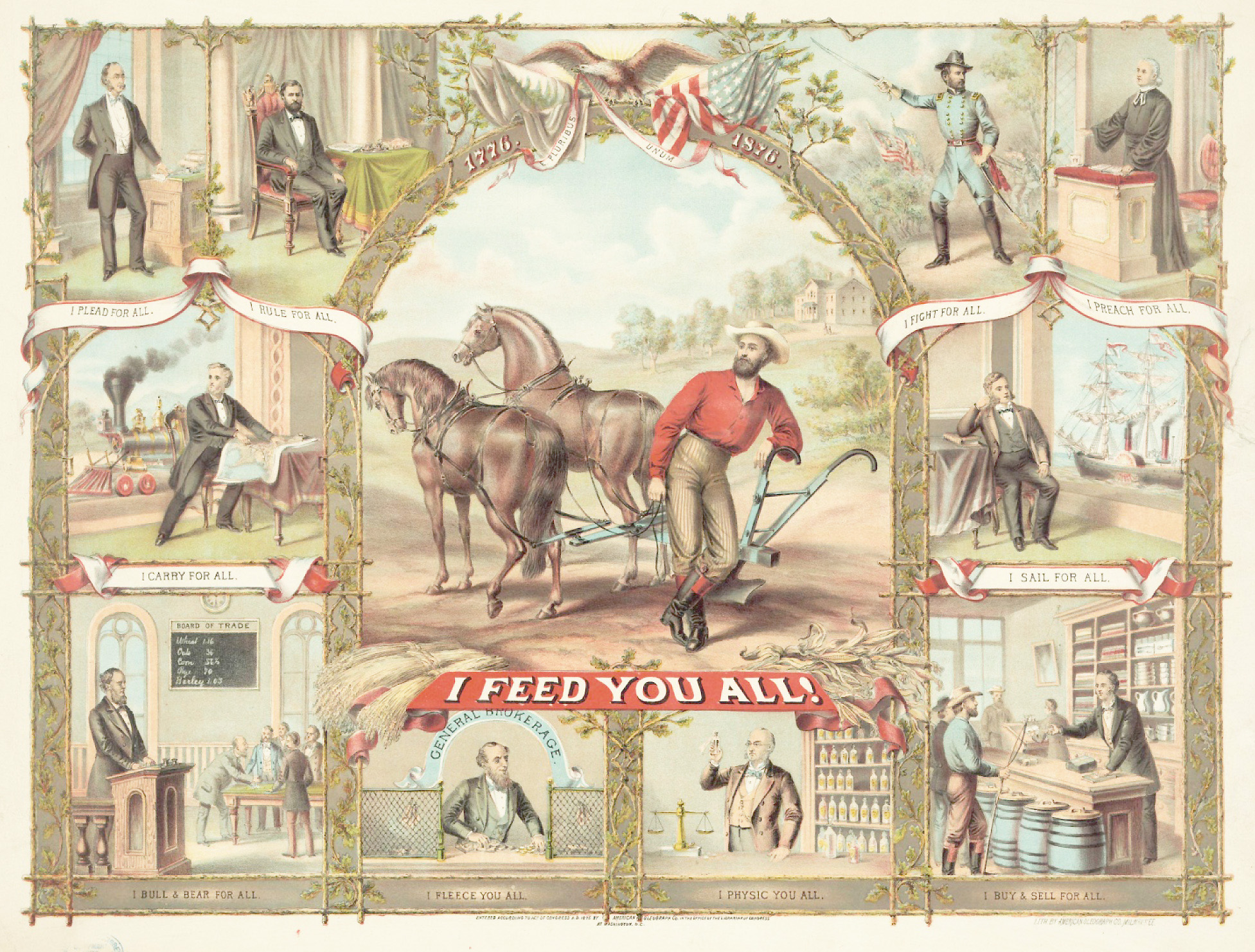Almighty Father, maker of Heaven and Earth….
When President Andrew Johnson sent federal postal clerk Oliver Hudson Kelley to collect agricultural data in the war-ravaged South in 1867, letters from distressed farmers were flooding Washington. What Kelley found that summer was isolated, demoralized, poverty-stricken farms and communities being preyed upon by carpet baggers and swindlers, compounded by primitive farming methods, depleted soils and poor harvests.
What would it take to bring these farming families together as an agrarian fraternity with a mission to bring forth rich harvests and build healthy, thriving communities with a sense of spiritual togetherness and patriotism in this Civil War-torn land?
Kelley, a Freemason with a farm of his own in Minnesota, returned to Washington and reported his dismal findings to William Saunders, a biologist with the fledgling Department of Agriculture. The plan they worked out would create The Patrons of Husbandry—the Grange. As an organization it offered farm families a place to break bread together while receiving and sharing the information needed to improve soil and crop production and modernize farm family living. Members would forge a cooperative legislative path through local subordinate meetings, to annual state grange sessions to legislation be acted on through the National Grange with its lobbyists in Congress. Theirs would be a collective voice that would change, and continues to change, life for the better in rural America.
Kelley and his team took a leaf from Greek mythology and the implements of stewardship from the old English countryside to form ritual that gives full credence to The Creator while incorporating the roles those who tend the land would need to thrive: Worthy Master, Overseer, Steward, Lady Assistant Steward, Gatekeeper. For business: Secretary and Treasurer. For education and spiritual guidance: Lecturer and Chaplain. For historic inspiration to produce bounty in every season: the Greek symbolism of Flora, Cerres and Pomona. For national unity: the flag of the United States of America to pledge allegiance to at every meeting.
The Grange became a model of equality for its time, with equal rights for women and junior granges for children to conduct for themselves and learn from experience. The organizational power of strength in numbers would be used to benefit rural America as modern science brought breakthroughs in agriculture. Legislative muscle would bring better living conditions, including rural free delivery and electricity.
This 1875 lithograph heralded the Centennial of 1876 by showcasing the farmer behind his plow, captioned, “I feed you all!” Surrounding him are the professionals, laborers, military and government entities that made up 19th century America. The financial crisis of 1873, triggered when Congress reduced paper money in favor of gold and silver, devastated farmers nationwide as crop prices fell and railroad fees to ship crops rose. This poster was an opening salvo of what was to come as farmers resisted with organized intent, starting cooperatives, using the power of the vote and above all, promoting and practicing modern farming methods that would bring the United States into prosperity.
There was a surge in Grange membership in the mid-1870s, both at the state and national levels as Grangers gave their support to reform movements to break the hold monopolies and special interest groups held on the politics of the day. The educated agrarians of the Grange found their place in the social order as advocates for the science of agriculture coupled with the morality of living a righteous life, summed up in the Grange motto: “In Essentials – Unity. In Nonessentials – Liberty. In All things – Charity.”
